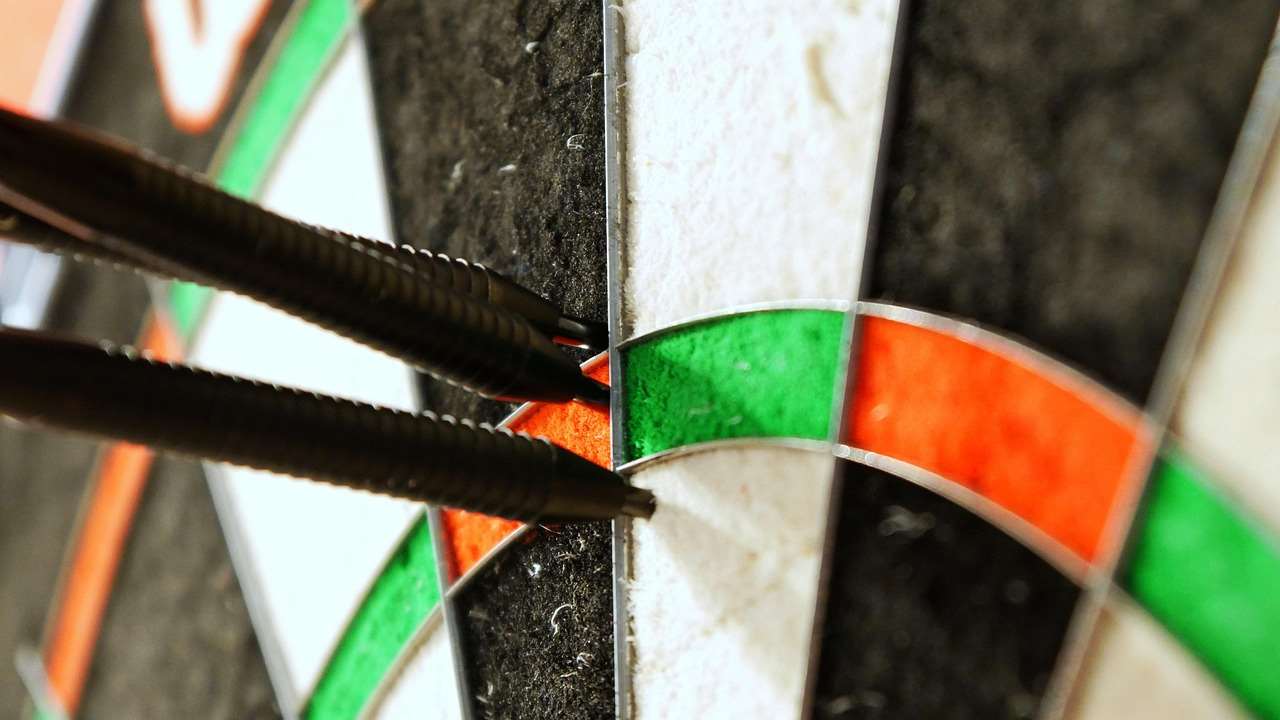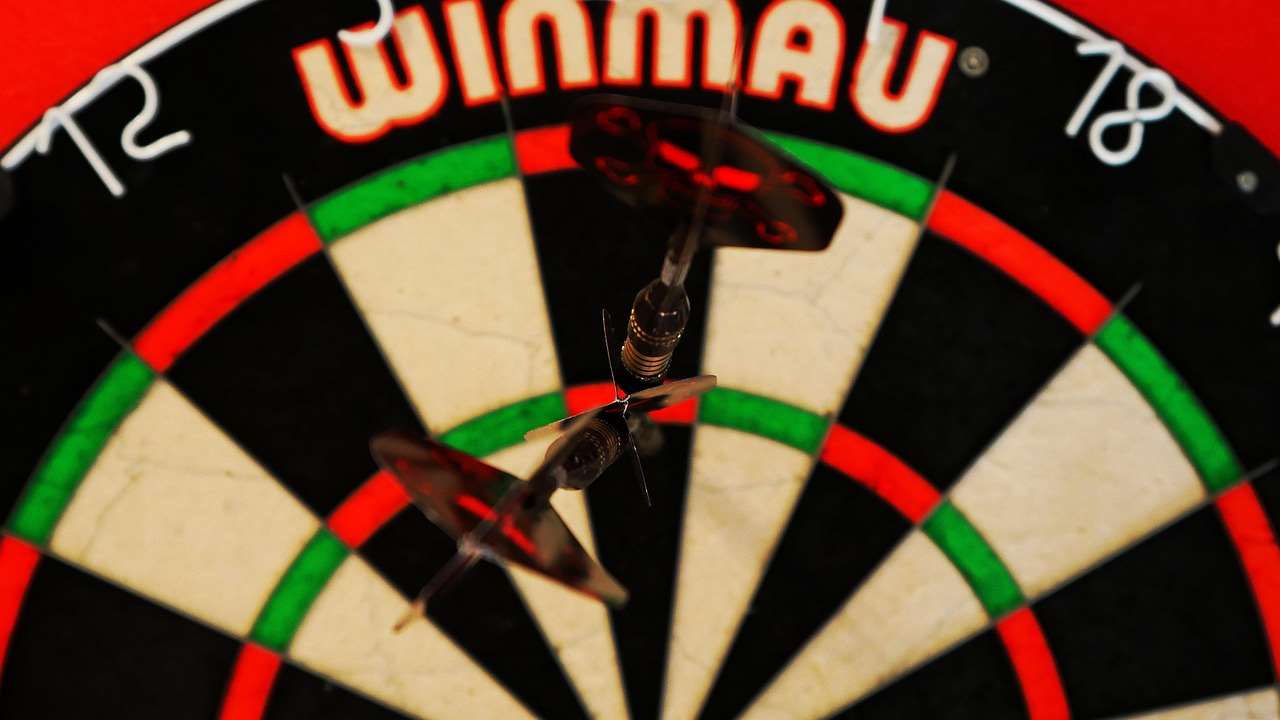A leg of darts is simply a single game within a larger match. Understanding this fundamental concept is crucial to enjoying and comprehending the sport. This article will delve into the intricacies of a leg of darts, explaining its rules, scoring, and strategies, along with providing tips for improvement.
⚠️ Still Using Pen & Paper (or a Chalkboard)?! ⚠️
Step into the future! The Dart Counter App handles all the scoring, suggests checkouts, and tracks your stats automatically. It's easier than you think!
Try the Smart Dart Counter App FREE!Ready for an upgrade? Click above!
Before we dive into the specifics, it’s important to understand that the structure of a darts match can vary greatly depending on the format. However, the basic building block remains consistent: the leg of darts. A player wins a leg by reaching a predetermined score, typically 501, before their opponent. This usually involves throwing a combination of high scoring areas like the treble 20 or the bullseye.
Winning a leg of darts requires precision, strategy, and a degree of luck. Let’s explore how to master each aspect.
Understanding the Leg of Darts
A leg of darts is a race to zero. Players start with 501 points (or a different pre-determined score), and each dart thrown subtracts points from their total. The first player to reach exactly zero wins the leg of darts. Note that it’s not enough to go below zero; you must finish with a score of exactly zero.
The excitement of a leg of darts comes from the nail-biting tension as players approach the finish line. A poorly thrown dart can make or break a game, adding drama and making for unforgettable moments in the sport. Many professional matches are decided by a single leg of darts, showcasing the precision and skill required at the highest level.

Scoring in a Leg of Darts
Scoring in a leg of darts is straightforward. Each segment on the dartboard has a point value (from 1 to 20), and hitting the outer ring doubles the score, while hitting the inner ring triples it. The bullseye is worth 50 points, and the bull (the smaller inner circle) is worth 25 points. Strategic use of these high-scoring areas is key to winning a leg of darts quickly and effectively. Learning how to use a darts point scorer or a Dart Counter App can be a huge help. For example, using a darts point scorer can enhance your practice sessions. Knowing the point values and their placement on the board is crucial for planning a successful game. Many players develop a unique approach or “checkout” strategy for finishing a leg of darts.
Consider how many points you have left and the possible combinations of numbers and doubles you can throw to arrive at a score of zero. This is a crucial skill to develop as it distinguishes a casual player from an accomplished one.
Strategies for Winning a Leg of Darts
While luck plays a small part, consistent performance wins a leg of darts. Here are some strategies to enhance your game:
- Accurate Aim: Practice consistently to improve your aim.
- Strategic Throws: Don’t just throw; plan your shots strategically, aiming for high-scoring areas, but only when there is a significant chance of success.
- Checkout Strategy: Develop a checkout strategy to help you approach zero effectively. Knowing which combinations of doubles and trebles can take you to zero is fundamental to winning. This requires understanding the game’s maths.
- Mental Game: Maintain focus and manage your nerves. A strong mental game is crucial, especially in close matches.
Furthermore, understanding the nuances of different match formats is crucial for mastering the game. For instance, the pressure of a sudden-death leg of darts is very different from the steady progression of a longer match. You can improve your understanding of different match styles by practicing, and by reading match reports from tournaments like the darts scores grand prix.
Common Mistakes to Avoid
Many players, especially beginners, make these common mistakes:
- Rushing Shots: Take your time and aim carefully; rushing often leads to missed shots.
- Ignoring Your Checkout: Failing to plan your finishing throws can cost you the leg of darts.
- Poor Grip: A consistent and comfortable grip is essential for accuracy.
- Inconsistent Throwing Motion: Maintain a smooth, consistent throwing motion for accuracy.

Equipment and Setup for a Leg of Darts
The right equipment can make all the difference. Consider using quality darts, a well-maintained dartboard, and a consistent throwing distance for optimal performance. When setting up for a leg of darts, ensure your dartboard is properly mounted at the regulation height, and your throwing distance is consistent throughout the game. These seemingly minor details can significantly impact your accuracy and overall score.
Choosing the right darts is vital for your performance. Consider factors like weight, grip, and barrel length. Many dart players explore different types of darts, and even different dart flights. Having a good darts flight box is extremely helpful, especially if you have several different sets of flights.
For instance, if you’re playing a leg of darts at home, ensuring you have a suitable dartboard for bedroom can greatly enhance your experience. This choice will help protect your walls, and ensure a safe and enjoyable game.
Beyond the Single Leg: Understanding Tournament Play
While a single leg of darts is a fundamental unit, most tournaments and matches involve multiple legs. The number of legs needed to win a match varies depending on the format, with some matches featuring a best-of-five or even best-of-seven leg of darts setup. A tournament might consist of several rounds, with each round requiring players to win a certain number of legs to progress to the next stage. Professional tournaments, like those featured in the news as darts match last night, often have incredibly complex structures.
The pressure intensifies as the tournament progresses, and a single missed leg of darts can have major implications for a player’s overall standing in the tournament. The highest prize money might be awarded to the ultimate winner. You can find information about the winning amount by searching the web for darts championship prize money. Professional players will use every trick at their disposal to win a key leg of darts at a crucial moment. Understanding the broader context of tournament play adds another layer of complexity and excitement to the sport.

Improving Your Game: Practice and Resources
Consistent practice is key to improving your leg of darts performance. Spend time refining your aim, developing your checkout strategy, and working on your mental game. There are many resources available to help you improve, including online tutorials, coaching sessions, and practice tools.
One of the most effective methods for improving your game is recording yourself throwing darts. Observe your techniques and analyze where things are going wrong. Another tip is to focus on consistent throwing motion and accurate aim.
Furthermore, using a steel dart might give you an edge in your performance. Consider finding a reliable darts league and using a singles dart league format template to ensure you are familiar with the formats used in professional competitions.
Participating in local leagues or tournaments is an excellent way to gain experience and hone your skills. This practical experience is invaluable, far surpassing the results you might achieve using only a darts point scorer or app.

The Psychology of a Leg of Darts
The mental aspect of darts is often underestimated. Pressure, nerves, and focus all play a significant role in your performance during a leg of darts. Learning to manage your emotions and stay focused under pressure is crucial for consistent success.
Visualizing your throws, practicing mindfulness, and developing a positive self-talk strategy are valuable tools for enhancing your mental game. These techniques help to calm nerves and improve focus, ultimately leading to better dart throws and a higher chance of winning that crucial leg of darts.
Remember, even professional players experience moments of doubt and pressure. It’s how they handle those moments that separates the successful from the rest. Consider exploring the story of the near 9 dart finish in final as an example of the mental toughness required in professional darts.
Strategies for Mental Toughness
- Deep Breathing: Use deep breathing exercises to calm your nerves before and during the game.
- Positive Self-Talk: Focus on your strengths and encourage yourself rather than dwelling on mistakes.
- Visualization: Visualize successful throws and outcomes to enhance your confidence.
- Relaxation Techniques: Incorporate relaxation techniques into your routine to minimize stress.

Conclusion
Mastering the leg of darts requires a blend of skill, strategy, and mental fortitude. From understanding the scoring system to developing a winning checkout strategy and cultivating mental toughness, there are numerous facets to the game that contribute to success. By focusing on consistent practice, improving your technique, and employing effective mental strategies, you can significantly enhance your performance and increase your chances of winning that next crucial leg of darts. Remember to utilize the resources available, such as online tutorials, coaching, and local leagues, to further refine your skills. Don’t forget to check out our amazing darts promo for some great deals on equipment! And if you need help counting your score, try the Dart Counter App today!
Hi, I’m Dieter, and I created Dartcounter (Dartcounterapp.com). My motivation wasn’t being a darts expert – quite the opposite! When I first started playing, I loved the game but found keeping accurate scores and tracking stats difficult and distracting.
I figured I couldn’t be the only one struggling with this. So, I decided to build a solution: an easy-to-use application that everyone, no matter their experience level, could use to manage scoring effortlessly.
My goal for Dartcounter was simple: let the app handle the numbers – the scoring, the averages, the stats, even checkout suggestions – so players could focus purely on their throw and enjoying the game. It began as a way to solve my own beginner’s problem, and I’m thrilled it has grown into a helpful tool for the wider darts community.